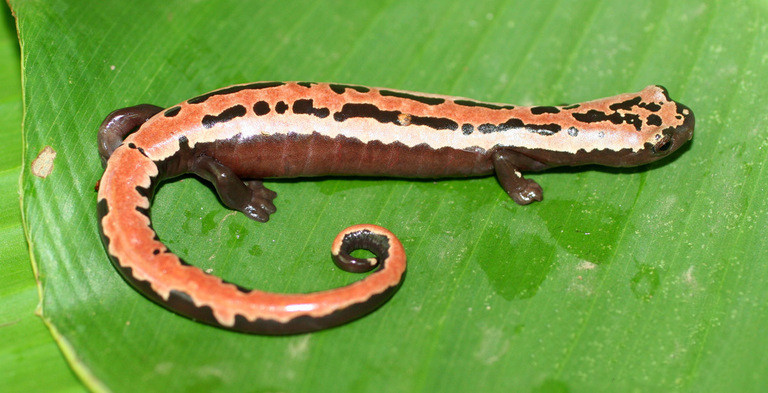Unveiling the Mossy Mystery of the Talamanca
In the dense, moss-covered expanses of Costa Rica’s Talamanca Mountain Range, a team of scientists stumbled upon a curious and robust creature guarding a precious clutch of eggs. Between 2013 and 2016, during an expedition primarily aimed at cataloging salamanders, they unearthed a startling discovery: a new species that was christening the scientific world.
Introducing Bolitoglossa bolanosi
Named Bolitoglossa bolanosi, or the Bolaños’ web-footed salamander, this new species stands out as the fourth unique type of salamander native to the subalpine rain páramo of Isthmian Central America. This fragile and isolated ecosystem, nestled high in the Talamanca mountains, cradles these fascinating creatures.
Anatomy of a Páramo Inhabitant
Characterized by their larger, robust bodies, these salamanders measure between approximately 1.6 and 2 inches in length. Their notable features include broad hands and feet, long tails, and relatively lengthy, slender arms and legs. Their skin exhibits a captivating palette, predominantly brownish-black or violet, adorned with lighter, blotchy patches and often highlighted with yellow spots. Some individuals, particularly juveniles, present a striking all-black appearance.
A Visual Symphony of Colors
The Bolitoglossa bolanosi doesn’t shy away from a splash of color. Sporting dark bronze eyes, their upper arms are a dance of pinkish-brown hues interspersed with orange blotches. This mottled appearance provides perfect camouflage in their mossy, spongy soil habitat, sprinkled with ferns and isolated trees.
The Habitat: A ‘Sky Island’ Ecosystem
Researchers found these salamanders in an environment aptly dubbed a ‘sky island’ – a secluded mountain range shrouded in mystery. They were discovered at elevations ranging from 8,370 to 10,630 feet within the La Amistad International Park, located in southern Costa Rica. This unique habitat, with its deep moss mats and isolated trees, forms the perfect backdrop for this salamander’s secretive life.
A Glimpse into Their Behavior
Although much about their behavior remains unknown, some females were observed fiercely protecting their eggs under the moss. This maternal instinct, coupled with their unique environment, underscores the ecological significance of these creatures.
A Tribute to Federico Bolaños
The Bolitoglossa bolanosi salamander pays homage to Federico Bolaños, a renowned Costa Rican herpetologist, embodying his passion and dedication to the study of reptiles and amphibians.
A Conservation Priority
The discovery of Bolitoglossa bolanosi shines a light on the importance of conserving the unique and vulnerable ecosystems of Costa Rica. As scientists continue to unravel the mysteries of this new species, the salamander stands as a testament to the endless wonders of our natural world.


1 comment
[…] Source link […]